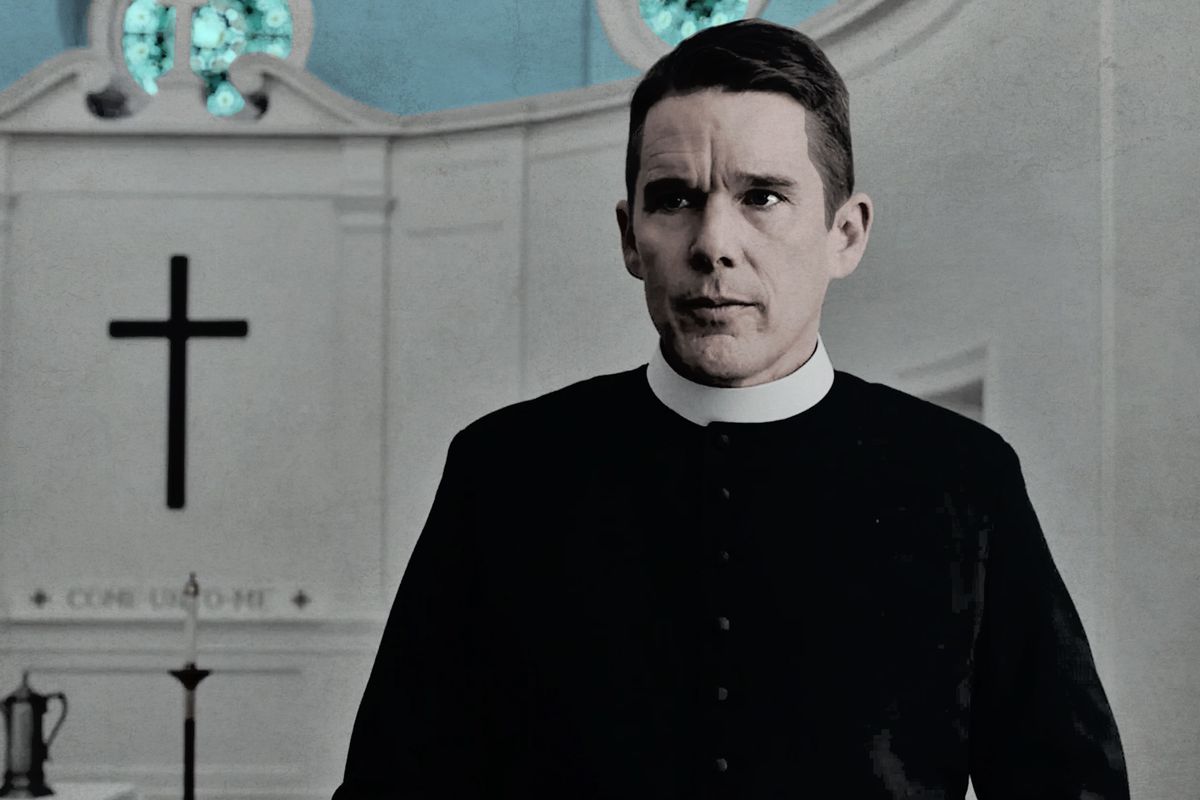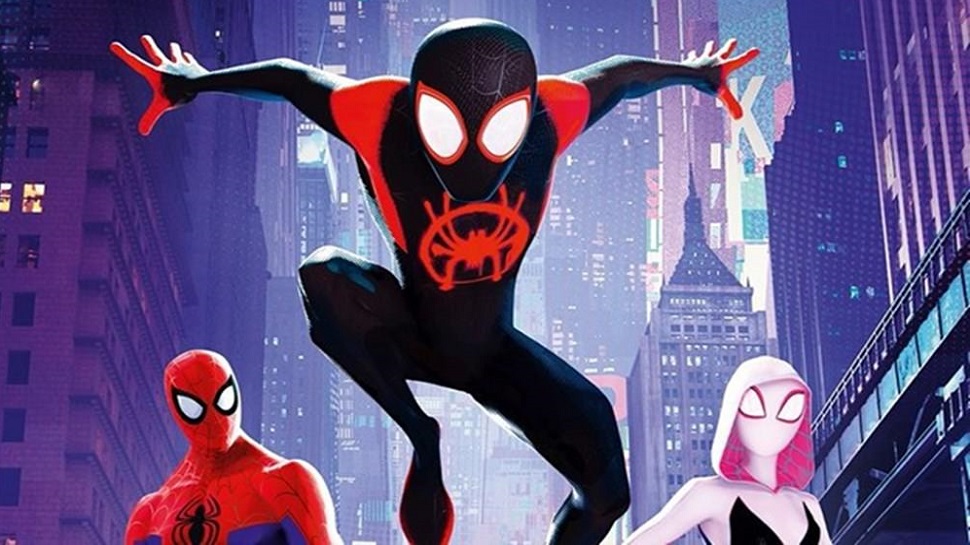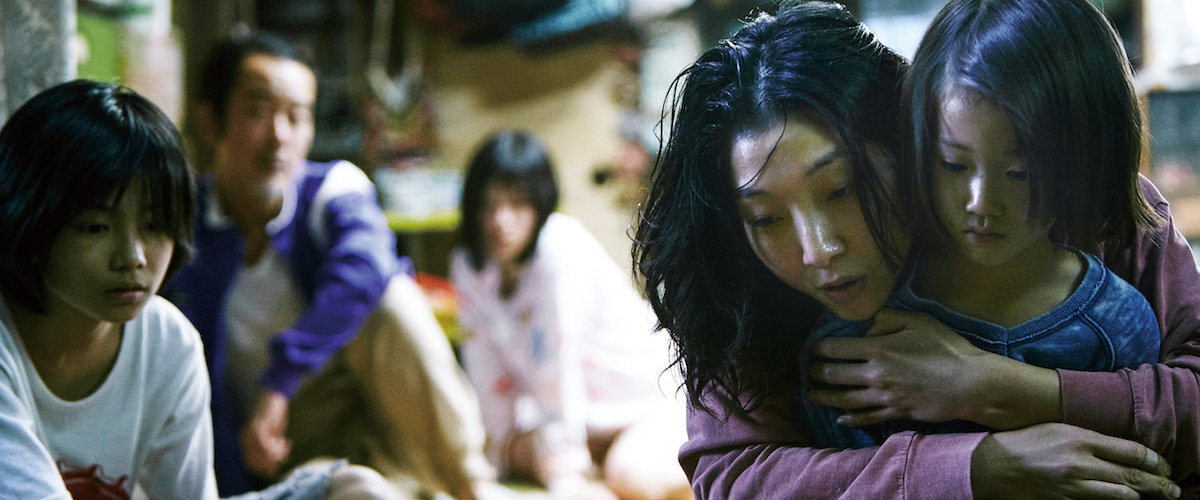
Another year, another impossibly large crop of interesting films big and small. As the indie and international scene continue to thrive, it feels as though there is a consistent stream of pictures that are great but hard to find. Meanwhile, there are also plenty of enthralling big-budget films, many of which are helmed by the directors that used to make the rounds on the international and indie circuit. This positive feedback loop has led to an abundance of great stories being told, and this year is no exception. While this list wasn’t specifically designed to highlight lesser-known pictures, the strength of the indie and international spaces naturally led to featuring many representatives from this space. Let’s run it down.
5. Spider-Man: Into the Spider-Verse

In a cinematic landscape saturated by superhero movies, it’s no small miracle that not one but two films of the genre broke through the noise to deliver stories with nuanced characters and important messages of inclusivity. Although I love both Black Panther and Spider-Man: Into the Spider-Verse, it is the visual creativity, humor, and incredible tone management of the latter that narrowly elevates it over that other great superhero story. The team at Sony Pictures Animation have accomplished something completely unique aesthetically, marrying 3D animation to comic book paneling and graffiti art. Hard cuts to insert frames and text overlays combine with smooth impossible-to-film action sequences, creating a rich and stylistic montage of cool.
While it may be the umpteenth Spider-Man origin story since Sam Raimi’s take on the concept in 2001, here the screenwriters playfully wrote this redundancy into the very premise. Riffing on the convoluted nature of long-running comic book’s extended fictions, the various Spidermen and Spiderwomen that eventually crowd the screen offer shades of hilarity and heartbreak. We have the simultaneously humorous and depressing antics of the broken down Peter B. Parker, an unlikely teacher who has his own trail of baggage. Gwen exudes confidence but is grounded through a traumatic experience in her past. Then there’s the comedic triumvirate of Spider-Ham, Spider-Man Noir, and Penny Parker, giving us a fusion of Looney Toons slapstick, digs at hard-boiled protagonists, and an anime robot girl.
Rounding out the cast is Miles Morales, our charming protagonist who is the bedrock of this wildly divergent picture. His struggles with his newfound responsibilities range from comical flailings to genuine devastation. And most importantly, it’s hard to think of another superhero flick since Raimi’s that so succinctly summarizes the tremendous weight of heroism. Into the Spider-verse’s ability to combine the grave with the comedic can be best summarized when a cartoon pig woefully proclaims “You can’t save them all” to our young protagonist, a reminder of the burdens of that come with the suit.
4. Burning

Those who approach Lee Chang-dong’s latest film with patience will be rewarded. Based on a short story by Haruki Murakami, Burning is a searing character study that disassembles the tropes surrounding this type of mystery tale. We follow the hapless Jong-seo Jun, a young man who is an aspiring writer. After he rekindles his relationship with a childhood friend Hae-mi, Ben enters the picture. He is rich, confident, and attractive, but has an unsettling demeanor. From there, things devolve into a spiral of paranoia and jealousy amidst the backdrop of clashes between class.
The slow-burn of the first act is justified by the character turns late in the story. We step through the monotonous existence of Jong-seo’s life and come to be intimately familiar with its emptiness. While we root for him as he bonds with Hae-mi, it doesn’t take long before things become deeply unsettling. We see varying degrees of male possessiveness in the form of our protagonist and the antagonist, each of them using Hae-mi to fill their empty souls. The typical trappings of fridge-stuffing based revenge stories are blasted apart through the indictment of the main character, his obsession more sinister than it is justified.
While the pacing can be languid at times, the poetic beauty of the cinematography handled by Hong Kyung-pyo captures every minute detail of Jong-seo’s existence, giving us the necessary insight into understanding his character. The most gorgeous sequence of the film concisely encapsulates the longing for a purpose that plagues Jong-seo, Hae-mi, and Ben, an extended sequence shot of an enrapturing dance set against an impossibly scenic sunset. Burning is a dense and methodical mystery film that taps into emotions of loneliness and longing with potent acuity, and will undoubtedly leave many filmgoers smoldering wrecks.
3. Shoplifters

I feel like if Kore-Eda Hirokazu met Sean Baker they would be fast friends. Both directors are skilled at empathetically portraying those that live at the fringes of society. In the case of Kore-Eda’s latest film Shoplifters, we follow the lives of a makeshift family, the Shibatas, who get by through a combination of menial labor and light theft. We witness the grace and skill of their grocery store thefts, as well as the grinding monotony of their jobs. We see the genuine warmth that these parents shower on their children, and we witness as bonds form between newer members of the family. But as we get to know the Shibatas better, elements of moral ambiguity increasingly creep into the picture. Light crime aside, what seemed like a relatively holistic family begins to reveal cracks and wear as the story carries on.
But even as the intrigue ratchets up in the third act, the conclusions drawn from the story aren’t hopelessly cynical, instead revealing a humanistic interior. Between the nuance of the acting and the characters, it truly feels like the Shibatas are a real family that cares about one another. This is captured through transcendentalist filmmaking that channels the spirit of Ozu. Long shots slow down the pacing and force us to inhabit our protagonist’s point of view. It is also helpful that cinematographer Kondo Ryuto is able to transform the mundanity of everyday life into something engaging through lush deep focus shots and playful shoplifting scenes. In a year defined by hatred and judgment of “the other”, Shoplifters is a heartbreaking but achingly tender portrayal of those that live outside of societal norms.
Check out our review of the film here.
2. First Reformed

Speaking of transcendentalist films, screenwriter/director Paul Shrader literally wrote the book on the subject. His 1988 novel Transcendental Style in Film: Ozu, Bresson, Dryer linked those three film directors to a style defined by naturalistic performances and patient pacing. It is meant to emulate the ebb and flow of real life, placing the audience in the midst of the protagonist’s actions. First Reformed could be described as Shrader’s first true crack at the style, a methodical but thrilling psycho-drama that features a career-best performance from Ethan Hawke.
The story follows a Protestant minister Ernst Toller who has been relegated to overseeing a historical church with a dwindling denomination. As his uneventful days drag on, a younger member of his flock asks for help with her husband, a potentially radical environmentalist. While Toller intends to provide guidance to this troubled individual, he finds himself unexpectedly influenced by his cause. Compounding with his preexisting alcoholism and his guilt over the death of his son, Toller begins to devolve as his crisis of faith spirals out of control.
Although the film slowly shifts towards this Thriller premise, there is an undeniable connection to transcendentalists of the past in the presentation. Toller’s day to day labors on his gloomy church grounds bleed together in an uninterrupted montage of ennui. As bits of his past slowly unfurl, his damaged mental state comes to light. It is evident how the seeds of radicalism could take root, the mixture of nihilism, lingering doubt, and a seemingly worthy cause slowly warping the priest. The owner of the corporation that fund’s Tollers First Reformed Church even offers a justifiable foil, an insufferable global-warming denier whose greed and influence represent the types of people that obfuscate this crisis. Toller’s death spiral is brought to life through a truly world-weary performance from Hunt, his melancholy gaze and bubbling rage engulfing the frame. First Reformed is a deeply furious film, one that’s anger is equal parts unsettling and enrapturing.
1. The Favourite

I’ve been a fan of Yorgos Lanthimos’ idiosyncratic stories since I first saw The Lobster, a “romantic comedy” about society’s obsession with finding a romantic partner. His ability to create darkly comedic walled gardens makes him a singular and somewhat divisive storyteller. While The Killing of a Sacred Deer sometimes felt as though it was being terse purely for the sake of it, in The Favourite every snippet of character writing feels purposeful. Following a Machiavellian struggle between three women at the center of 18th century English court, two cousins battle to win over the heart of the monarch Queen Anne. Abigail Hill is the daughter of a degenerate gambler who lost their home and status, while her cousin Sarah Churchill is the lover, and confidant to the Queen.
Those expecting a ritzy costume drama in the style of Pride and Prejudice will be horrified to uncover a cynical dramedy that depicts cutthroat politics and twisted love. Where The Lobster attacks our perception of romantic relationships and The Killing of a Sacred Deer seeks to undermine the nuclear family, The Favourite presents the farcical extremes that people are willing to go through for the sake of moving up the social hierarchy. The pomposity and absurdity of the ruling class are exposed through glutinous meals, disturbing pastimes, and slow motion duck races, as the internal bickering of parliament descends into petty tribalism. But what is most striking is the way our three main characters conduct their battle of wits.
Olivia Colman (The Queen), Rachael Weisz (Sarah Churchill), and Emma Stone (Abigail Hill) elevate the sharp dialogue through a series of wicked performances. While Colman renders Anne as a character defined by her physical and emotional pain, Sarah Churchill is a brutally efficient political operator. Abigail Hill is a chameleon, utilizing her past trauma and ability to morph into different personas to manipulate those around her. However, despite the despicable actions all three engage in, there is just enough room for empathy to make their unfortunate happenings sting.
While the film is a costume drama that deviates harshly from the norms of the genre, it delivers on its Baroque influences in a way that is stunning to behold. The inky blacks and bits of illumination of the night scenes feel like Rembrandt paintings that call attention to the underlying sensuality and danger of the game being played. The ostentatious costuming and set design constantly illustrate the stakes, while also critiquing the circumstances. Fish-eye lenses disorient while capturing the grandeur of the architecture. Each of these elements combines with witty writing and performances to create a painfully effective cocktail, one that lambasts the behavior of these characters. In The Favourite, there is very little difference between love and war.
Check out our review of the film here.






